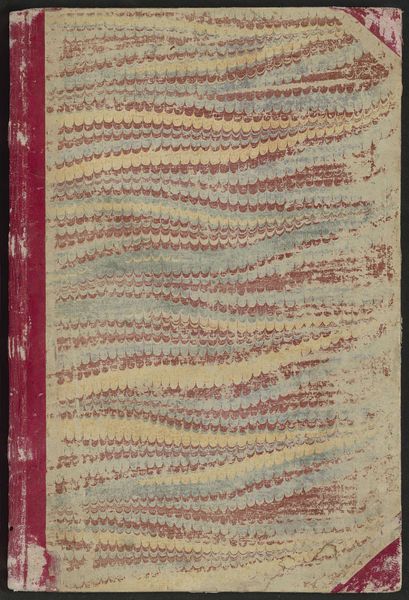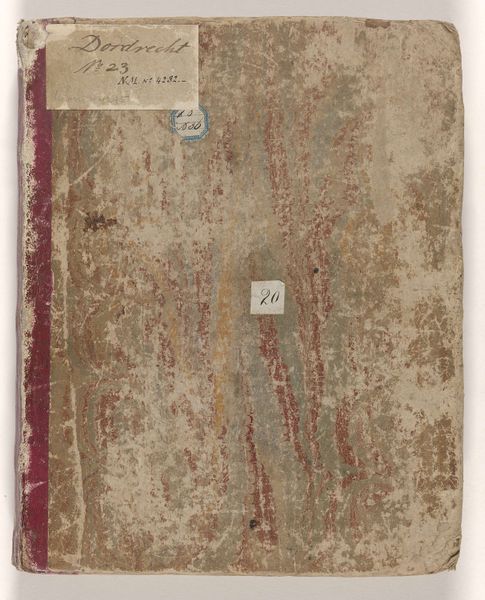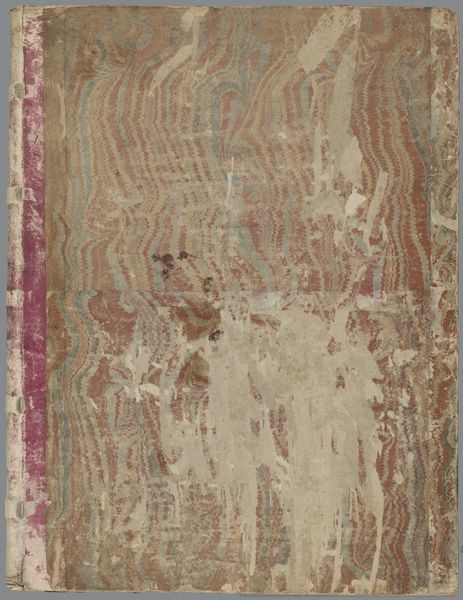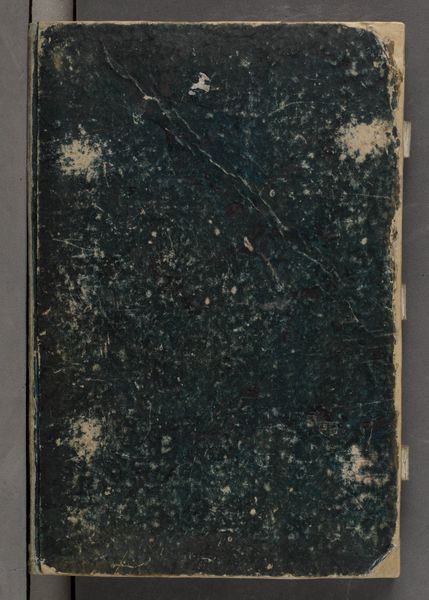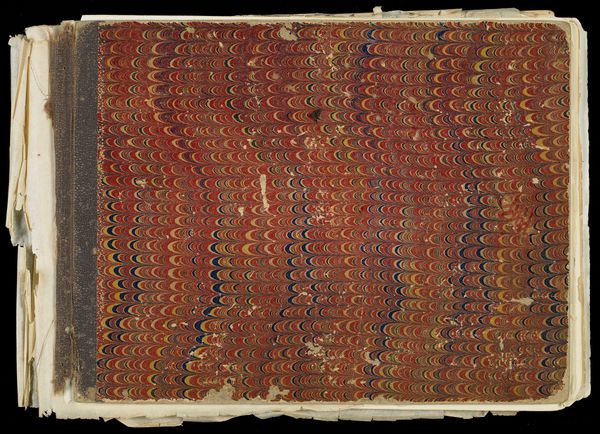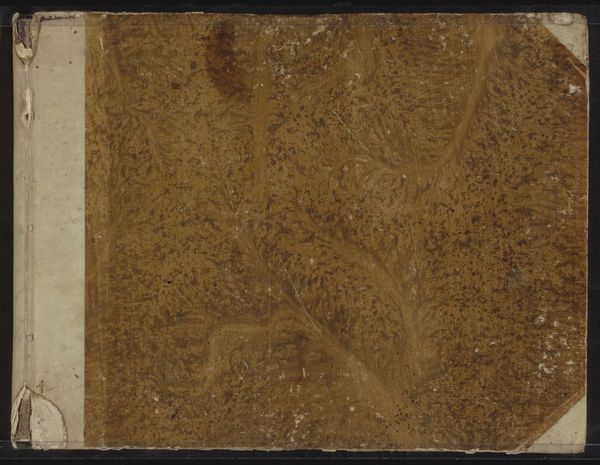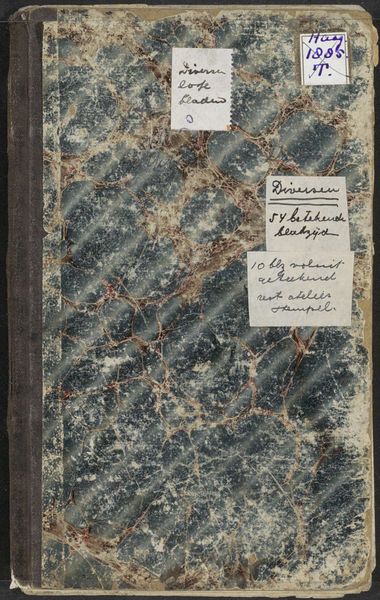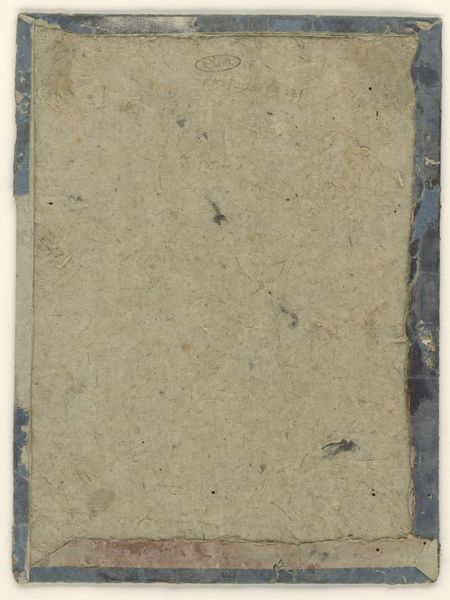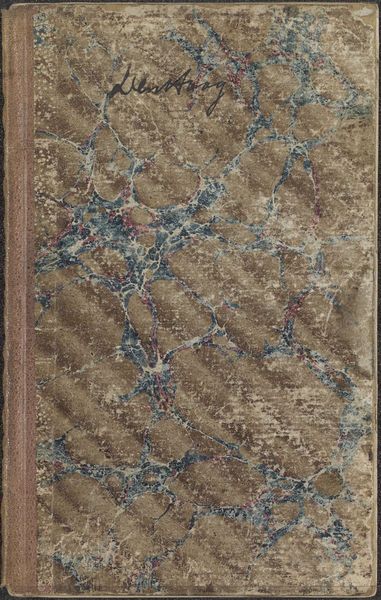
mixed-media, paper
#
mixed-media
#
paper
#
coloured pencil
#
mixed medium
#
mixed media
Dimensions: height 132 mm, width 189 mm, thickness 11 mm, width 378 mm
Copyright: Rijks Museum: Open Domain
Curator: Here we have a sketchbook comprised of 21 pages created by Abraham Meyling sometime between 1691 and 1748. It is done in mixed media on paper. Editor: It looks quite unassuming at first glance—rather small, and definitely aged. The cover gives it this lovely, marbled effect of faded blues and reds. Curator: Yes, the marbled effect really speaks to the time in which it was made, doesn't it? Marbling was a very fashionable bookbinding technique during this period, reflecting not just aesthetics but also the accessibility of printed materials. The production value here seems rather ordinary; it wasn’t necessarily intended to become this preserved, museum object. Editor: Indeed, the label pasted on the front cover draws our attention to the intersection of the personal and the public when considering art’s accessibility. Who was Corn. Pronk and what was their relationship to the sketchbook that determined its eventual cataloging? Perhaps it signals shifting social meanings assigned to artistic production during the 18th century. Curator: Right. And you'll notice the "mixed media" description. This designation suggests Meyling was exploring materials readily available. Paper was increasingly manufactured, and various pencils were emerging as popular tools. These choices reveal the artistic ecosystem and the economy that facilitated such works. Editor: The materials themselves signal the evolving relationship between artists and their craft at this time. Access to cheaper paper and writing instruments coincides with a broader trend of self-expression in visual arts. Was the artist a student, for instance? Curator: We could analyze the types of labor involved in creating and utilizing such a book; everything from the binder to the papermaker to the artist using the book itself had various social ramifications, even those unknown to us today. Editor: Thinking about labor allows for conversations on the value of creative labor and what is deemed worthy of collecting and preserving. These unpretentious notebooks can sometimes unlock richer narratives of gender, class, and artistic marginalization. Curator: It really makes you consider that an ordinary object, when observed critically, can unlock vast contexts regarding its origin, its accessibility, and its time. Editor: Absolutely; hopefully these brief insights shed new light on this modest yet fascinating artwork!
Comments
No comments
Be the first to comment and join the conversation on the ultimate creative platform.
